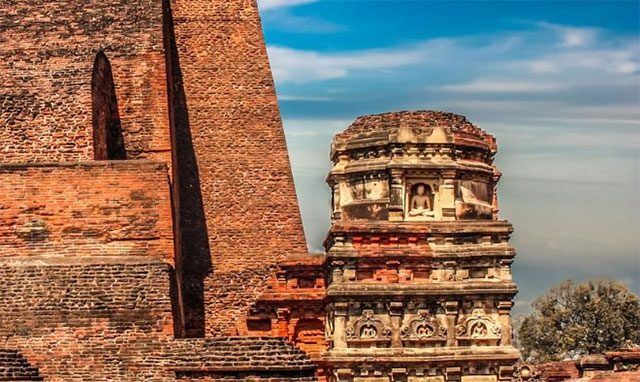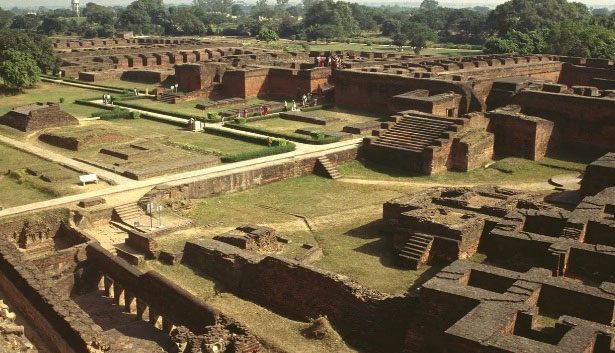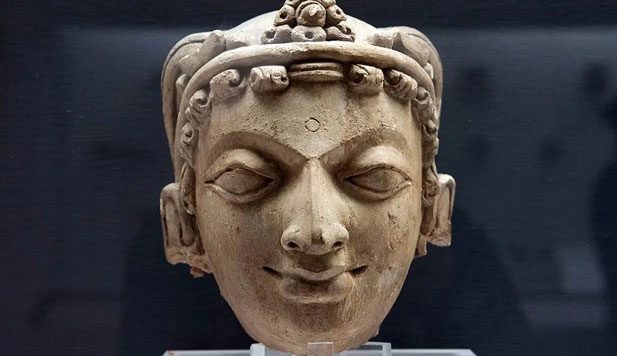Nalanda is a residential university located in Bihar, India, established in 427 AD. This university was built during a time of cultural and educational flourishing in ancient India, when Indian culture was robustly developing and reaching its zenith.
It is regarded as the first residential university in the world, housing up to 9 million books and accommodating around 10,000 students from across East and Central Asia.
Students came to Nalanda to study medicine, logic, mathematics, and above all, Buddhism. Nalanda thrived for over seven centuries. This Indian university predates the University of Oxford (England) and the University of Bologna (Italy)—the oldest university in Europe—by more than 500 years. Furthermore, Nalanda’s approach to philosophy and religion significantly shaped Asian culture long after the institution ceased to exist.

Nalanda thrived for over seven centuries. (Image: BBC).
Interestingly, the kings of the Gupta Dynasty (320-550 AD), who established Nalanda, were Hindus, yet they empathized with and embraced Buddhism and the philosophical works of the time. The cultural and religious traditions that flourished during the Gupta Dynasty formed the core of Nalanda’s multidisciplinary curriculum, integrating Buddhist wisdom with advanced knowledge across various fields.
The ancient Ayurvedic medical system of India, which originated from natural healing methods, was taught at Nalanda and later disseminated to other regions of India through its alumni. Nalanda’s most profound and enduring legacy lies in its achievements in mathematics and astronomy.
Aryabhata, regarded as the father of Indian mathematics, was the head of Nalanda in the 6th century. Mathematics professor in Kolkata, Anuradha Mitra, states: “We believe Aryabhata was the first to recognize zero as a digit, a revolutionary concept that simplified mathematical calculations and facilitated the development of more complex forms like algebra and calculus. Without zero, we would not have computers.”

The site of excavation today may only be a small part of the original Nalanda campus. (Image: BBC).
Several of the finest scholars and professors from Nalanda traveled to places such as China, Korea, Japan, Indonesia, and Sri Lanka to propagate Buddhist teachings and philosophy. This ancient cultural exchange program helped disseminate and shape Buddhism across Asia.
The famous Chinese monk Xuanzang studied and taught at Nalanda. Upon returning to China in 645, he brought with him a cart containing 657 Buddhist scriptures from Nalanda. Xuanzang later became one of the most influential Buddhist scholars in the world and translated part of the scriptures he brought from Nalanda into Chinese. His Japanese disciple, Dosho, later introduced these teachings to Japan. Thus, Xuanzang is credited as the “monk who brought Buddhism to the East.”
In the year 1190, this university was destroyed by an army led by General Bakhtiyar Khilji, who aimed to extinguish the Buddhist knowledge center during his conquests of North and East India. The vast campus of Nalanda was so extensive that the fire set by the attackers was said to have burned for three months.
The nine million palm-leaf manuscripts of Nalanda represented the richest repository of Buddhist wisdom in the world. Only a few manuscripts survived the fire—taken by fleeing monks. They are currently exhibited at the Los Angeles County Museum of Art in the United States.

Over 13,000 artifacts have been discovered at the excavation site. (Image: BBC).
Some scholars argue that Khilji sought to destroy Nalanda because he viewed its teachings as competition to Islam. In a book published in 1934 titled “The University of Nalanda,” one of India’s pioneering archaeologists, H.D. Sankaliya, suggested that the fortress-like appearance of the campus and the stories of its wealth were sufficient reasons for invaders to consider Nalanda a prime target for attack.
In the following six centuries, Nalanda gradually fell into obscurity and was buried. Scottish surveyor Francis Buchanan-Hamilton discovered Nalanda in 1812, and it was later identified as Nalanda University by historian Alexander Cunningham in 1861.
The archaeological ruins of Nalanda in Bihar, northeastern India, are now recognized as a UNESCO World Heritage Site. Today, the 23-hectare excavation site may only represent a small fraction of the original campus.





















































